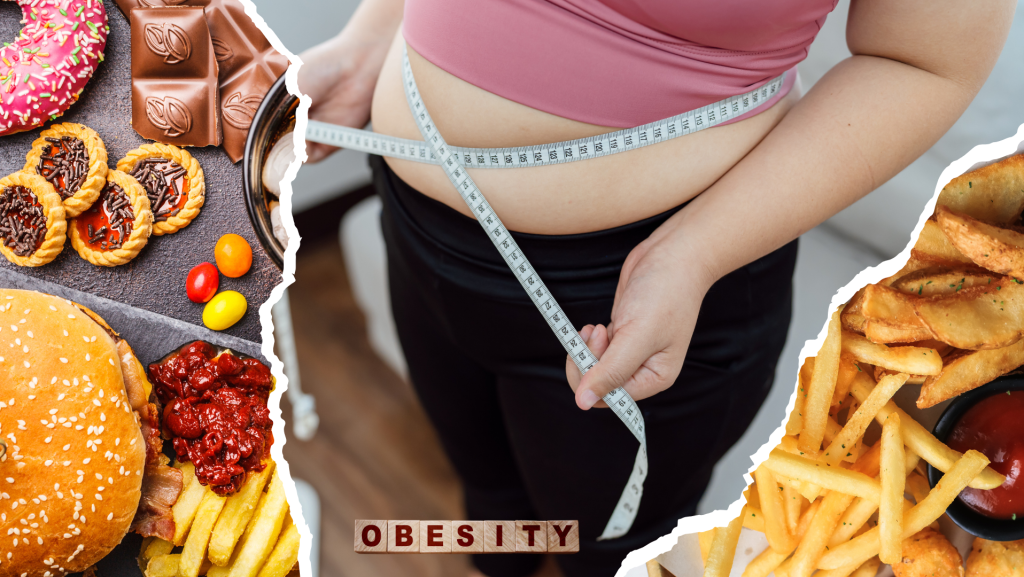By Nutriworld |Dt. Dipanwita Saha
Ever grabbed a “low-fat” snack, only to find it packed with sugar? You’re not alone. Food labels can be tricky. Clear sugar warnings and simple color codes could make them easy to read—helping us choose smarter, healthier foods without feeling like we’re solving a puzzle.
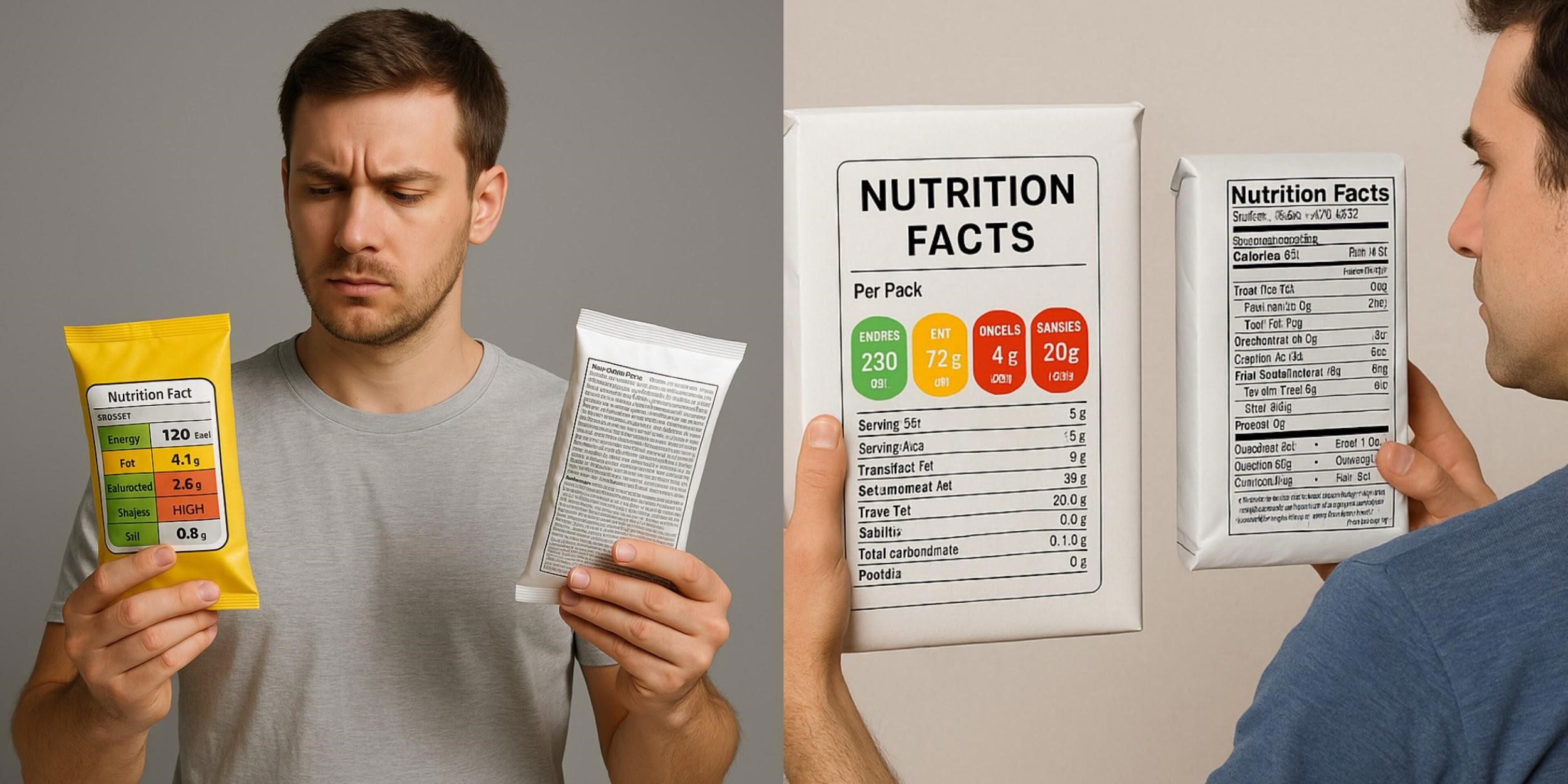
What are Food labels?
A food label is the information on a package that tells you what’s inside, including ingredients and nutrients. It’s a science-backed guide to help you choose safer, healthier foods and avoid hidden sugars, salt, or fats.
Why Food Labels Are So Confusing:
According to a 2022 survey by the International Food Information Council, more than half of shoppers struggle to understand food labels. Long ingredient lists, complicated terms, and inconsistent serving sizes make it hard to know what you’re really putting into your body. For people managing weight, diabetes, or blood pressure, this confusion can be dangerous.
Common Food Label Claims & What They Really Mean:
- Low Fat – Often means more sugar or starch.Low fat doesn’t always mean healthy—check the label.
- Sugar-Free – Can still have calories or carbs.Often uses artificial sweeteners—read the fine print.
- Natural – Not always good for you. The word “natural” isn’t strictly checked—look at ingredients.
- Organic – Fewer chemicals, not zero. It doesn’t guarantee more nutrients or safety.
- Gluten-Free – Only means no gluten. It can still be high in sugar, fat, or salt.
- High Protein – Might hide extra fat or sugar. Pick ones with clean, simple protein sources.
- Fortified – Nutrients are added, not natural. Helpful, but fresh foods are still better.
- Fresh – Could have been frozen before. Check the label to see how “fresh” it really is.
- Light – Can mean less fat, fewer calories, or just lighter color. Always check what’s actually reduced.
- Immunity Boost – Not always proven. Look for real science, not just big claims.
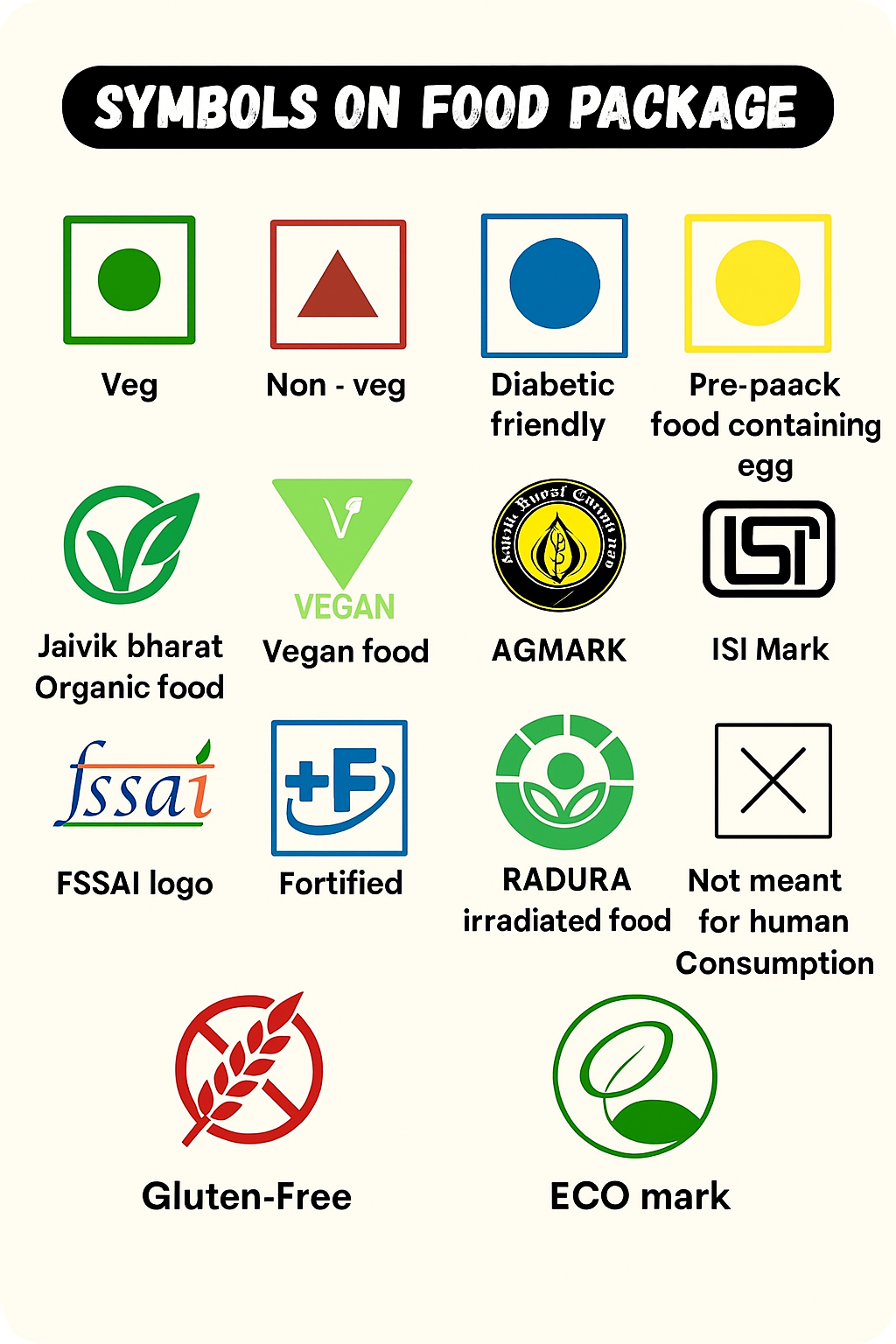
Extra Essentials for a Truly Transparent Food Label
- Expiry Dates (Use Before / Use By / Use On) – Know exactly how long the food is safe and effective.
- Ingredients List Check – The first items appear in the highest quantity; watch for hidden additives.
- Color Code Identification – Quick visual guide for sugar, salt, and fat levels.
- Trust & Authorization Logos – Marks like FSSAI, ISO, or organic certification assure credibility.
- Added Allergens – Alerts for common triggers like nuts, gluten, soy, or dairy.
- Additives – Declares preservatives, flavor enhancers, or artificial colors.
- Nutrient Information Panel (NIP) – Shows exact nutrient breakdown per serving.
- Nutritional Claims – Must be truthful (“Low Fat” should not hide high sugar).
- Voluntary Labelling – Extra info brands give to show transparency beyond legal needs.
- Health Risk Warnings – Flags for high salt, sugar, or harmful additives.
- Net Quantity – Lets you compare value and portion between brands.
- Country of Origin – Know where your food comes from for safety and quality.
- Consultation Advice – When in doubt, check reviews or speak to a doctor/dietitian.
- Food Identity – Clear product name so you know exactly what you’re buying.
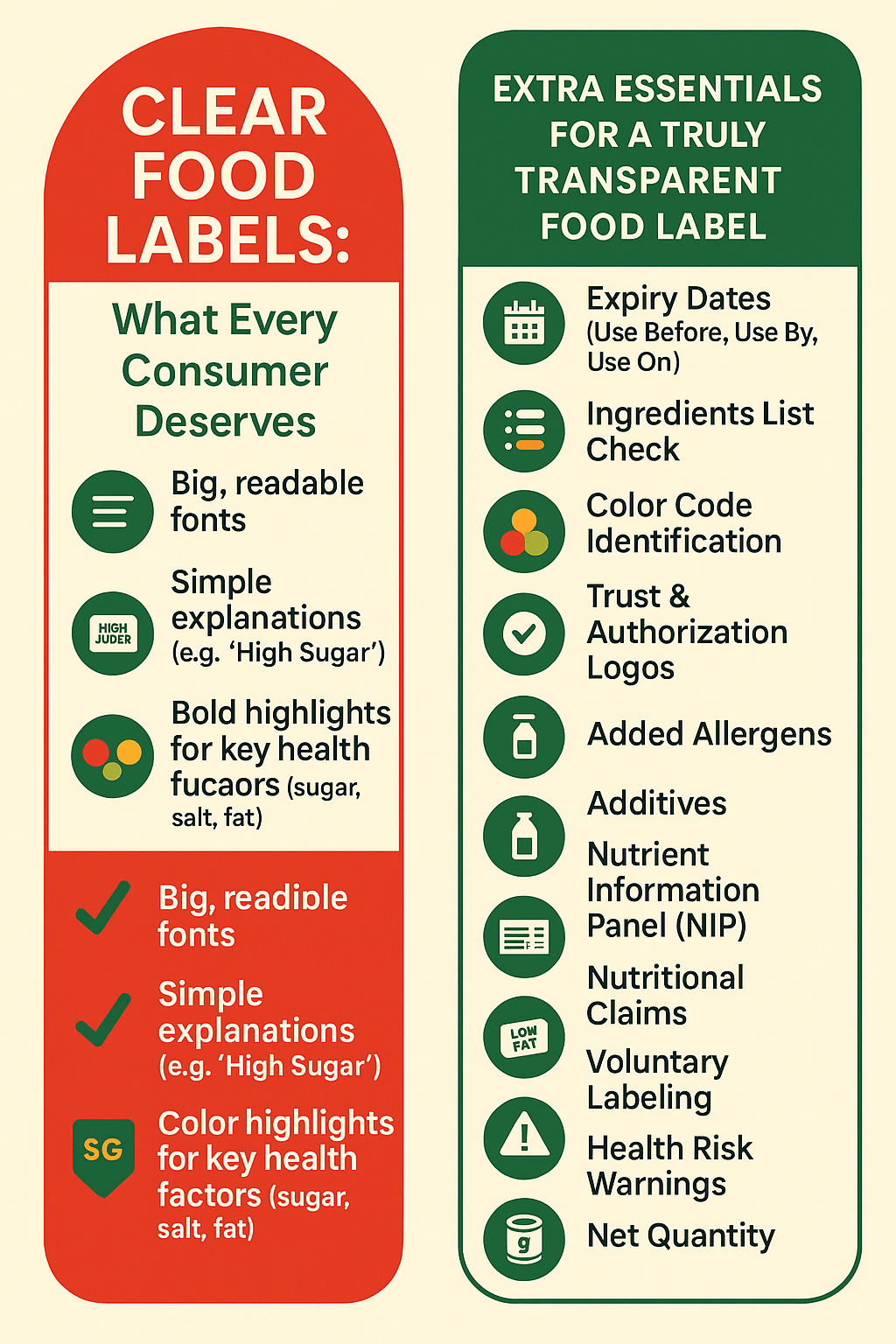
10 Smart Shopping Tips to Beat Misleading Food Labels
- Look past the front. The real facts are in the nutrition chart and ingredients list.
- Check serving size. “Low calorie” may be for half the pack, not all you eat.
- Spot sneaky sugars. Words like syrup, maltose, or juice concentrate = sugar.
- Ignore fluffy words. “Natural” or “light” doesn’t always mean healthy.
- Read ingredient order. First items make up most of the food—watch for sugar or oil.
- Know the secret to low fat. Often it means more sugar or salt for taste.
- Track salt. Sodium hides as baking soda, MSG, or sodium chloride.
- Keep it simple. Fewer ingredients = less processing, more whole foods.
- Use traffic light labels. More green, less red if your country uses this system.
- Plan ahead. Make a list to avoid flashy-label impulse buys.
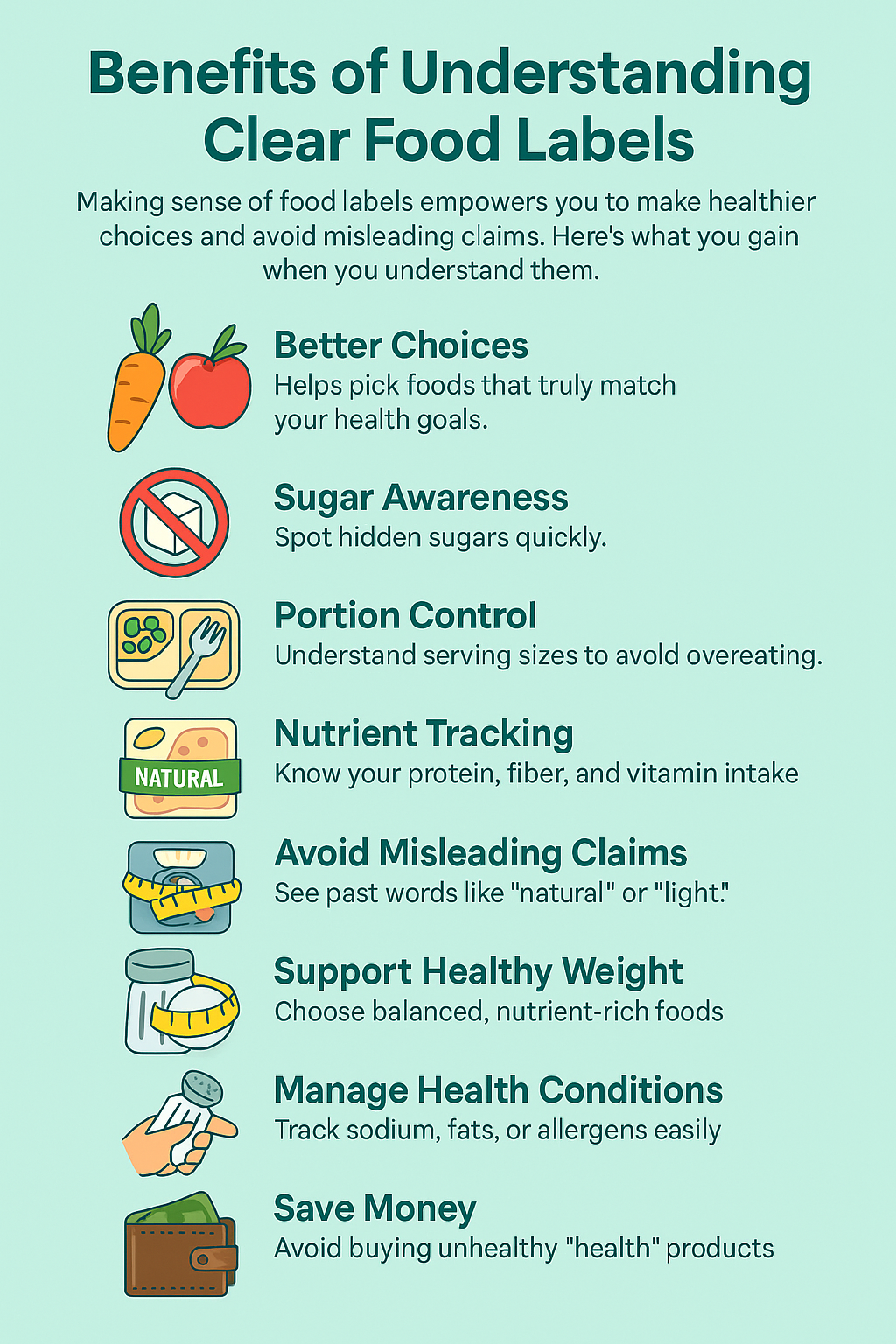
Conclusion : Clear Food Labels for Smarter, Safer Eating
Food labels shouldn’t be a puzzle. With traffic light colors, clear sugar warnings, honest portions, and plain language, they can help everyone—from kids to seniors—make healthier choices without confusion. Health starts with awareness, so let’s demand transparent, consumer-friendly labels that guide us, not mislead us, turning every shelf into a space for smarter, safer eating.
FAQs
1. What is the easiest way to read a nutrition label?
Start by checking calories, serving size, added sugars, and saturated fats. Use traffic light visuals where available.
2. Is "low fat" always healthier?
Not necessarily. Low fat can mean high sugar or salt. Always check the full label.
3. Why is added sugar different from total sugar?
Added sugar is not naturally present in the food. It’s included during processing and has no nutritional benefit—only extra calories.
4. Why are serving sizes important?
Serving sizes help you understand how much you’re actually eating. One pack may contain multiple servings!
5. Are traffic light labels available in India?
Not widely yet, but health experts are pushing for it. Some brands are voluntarily using simpler visuals.
6. Are these changes happening in India?
India is discussing front-of-pack labeling policies. Some brands have started voluntarily adopting color codes, but a uniform rule is still awaited.
By, Priyanka Das Nutrition Content Writing Intern [ Nutri World ]

